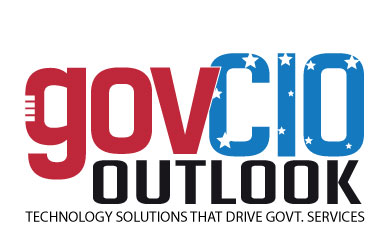Welcome back to this new edition of Gov CIO Outlook !!!✖
April-20169GOVERNMENT CIO OUTLOOKcan dynamically change the race course around the obstruction or look at different times or dates in real time, so as to consummate the permit process at one meeting.Empowering Departments through Analytic Models acting within an Information ExchangeOrganizations upon defining their business rules and gathering operational data, gain an understanding of their business and data. To fully exploit this information requires the application of descriptive (what is happening), diagnostic (why did it happen), predictive (predict what will happen) and prescriptive (identify pre-defined conditions) analytics. The resulting models and simulations allow a deeper understanding of City and operational dynamics; thereby, providing better insights towards problem solving and effective decision making.We seek to move our analysts up the analytics continuum; thereby, increasing the value of our information by leading from foresight not hindsight. Predictive analytics may be all the rage in the IT industry now, but City leadership, particularly the political sphere, has been asking for how we get to a specific programmatic outcome from where we stand today. Prescriptive analytics needs to become the new holy grail of "big data."Ultimately, the City of Minneapolis' IOP serves as a giant data sharing mechanism that provides an information rich environment for analytics to mine. Employees often need information from across jurisdictions to accurately reflect real life conditions. Providing employees access to the broadest cross section of City, County, State and Federal data will allow staff to make the necessary correlations for better decision making.Consider the challenge many cities have with identifying vacant properties before bad actors move in with criminal intentions. An analyst can use the Minneapolis IOP to look for early signs of a property being vacant--such as, unusually high water consumption as reported by the Water Department (i.e. copper piping has been removed); 311 suspicious person or vehicle reports; Regulatory Services citations for unkempt lawns; etc. Upon discovery of these conditions, an inspector can be dispatched to check out the property.Leverage Computing to mimic Thought Constructs used by Employees when Making Decisions Workers are constantly looking for cause-n-effect, deviations from the norm, and concentrations of activity and patterns, when performing their jobs. Computers can perform these tasks in the background and contact employees when thresholds are met, events occur, etc. Some analytics are not so obvious. Many city functions revolve around inspecting properties--such as for fire code violations. Even though the fire inspectors are required to inspect all buildings every few years, the Minneapolis IOP's prioritization analytic allows fire inspectors to rank properties with characteristics that tend to indicate a higher risk of fire. Inspecting those properties sooner rather than later can improve our chances of preventing fires. City departments have hundreds of use cases for analysis. The supporting analytic tools need to be generic in nature, allowing repeated use with different data sets. This promotes employees to think in multiple dimensions across the enterprise--the end of one-dimensional analysis constrained by data from one department. For instance, the property prioritization analytic mentioned above can be used to prioritize house inspections, etc.Also, automated analytics produces time savings in production, analysis, decisions, etc. Strategic use of information is the key to differentiating our city from any other--which will include new forms of information.For example, City analysts can find correlations that point to bad behavior on the part of landlords. This pattern of behavior can then be compared against all landlords to find a set of "bad" landlords the City should spend more time on. A vibrant, healthy housing stock is a great selling point for a city.Technology can enable a city to tell meaningful stories through dataCity leaders seek intervention opportunities in their event-driven cities; thereby, requiring information from diverse information systems and jurisdictions. Better knowledge leads to better decision-making and better outcomes--zip codes and communities that are safe, livable, healthy, etc. Government data has the potential to reshape governance dynamics. A big key for city government to achieve its goals revolves around data and analytics that are trusted, transparent and real-time.We view the Minneapolis IOP as an analyst's palette, where they can paint a picture for policy and decision makers via a rich selection of data as paint, applied with analytic brushes onto a story board canvas. Computers allow analysts to try many different combinations and allow a constant vigil watch of the City's event horizon--tapping a human on the shoulder should some threshold be crossed.
< Page 8 | Page 10 >
< Page 8 | Page 10 >
